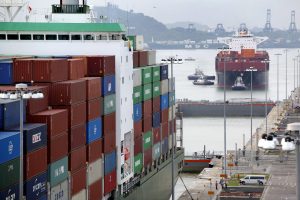
Panama City, Jun 26 (EFE).- The burgeoning US natural-gas industry is largely responsible for the high volume of shipments of liquefied natural gas (LNG) through the expanded Panama Canal, the waterway’s manager said Monday.
Nine percent of the more than 1,500 vessels – nearly six per day – that have transited the canal in the one year since the expansion was completed were carrying LNG, administrator Jorge Quijano said.
That number far exceeds the forecast made a decade ago at the start of the project to expand the inter-oceanic channel, when the United States “was not an exporter, but rather an importer of gas,” he said.
Prior to the expansion, the canal could not accommodate the tankers used to transport LNG.
Of the LNG shipments that move via the Panama Canal, 70 percent sail from a single plant on the US East Coast, Quijano said.

“Three additional plants will be opened (in the US) over the next two years, which means that there is a great possibility that liquefied natural gas (shipments) will grow to double what we are seeing today and possibly even to three times that,” the canal administrator said.
Thanks in part to the expansion, the Panama Canal Authority (known by the Spanish initials ACP) is on track to provide the Panamanian government with more than $1.6 billion in the current fiscal year, which ends Sept. 30, compared with $1.01 billion the previous year, Quijano said during a ceremony at the Cocoli Locks.
A 12.5 percent gain in revenue since October 2016 is attributable exclusively to the new locks, he said.
Container ships continue to represent the lion’s share of traffic through the canal, but volume has grown by less than expected as a result of a decline in global trade, the administrator said.
“We hope that economies continue recovering next year and we can see more container ships passing through the canal,” Quijano said.
Built by the US more than a century ago, the Panama Canal handles roughly 6 percent of the world’s trade.
